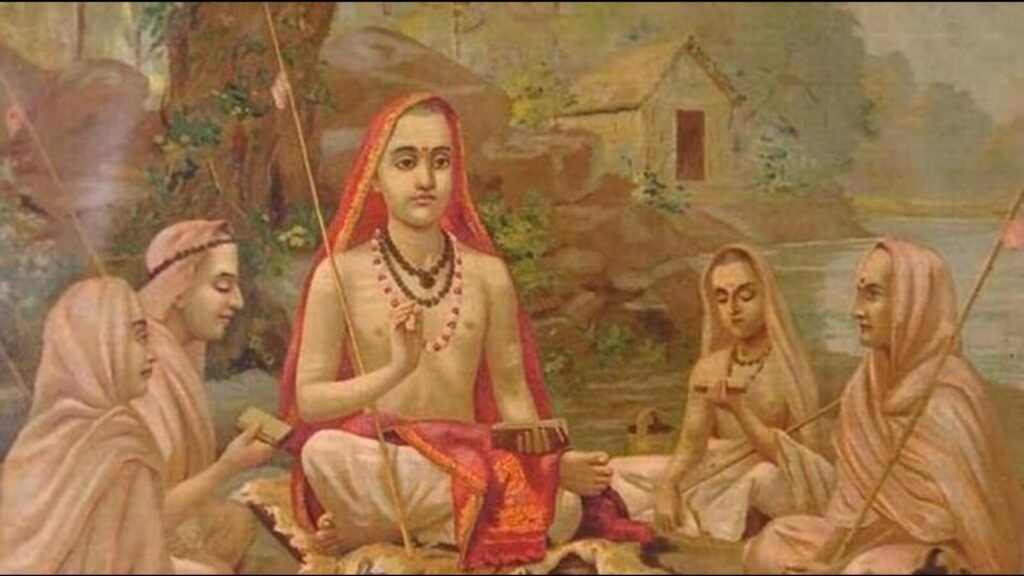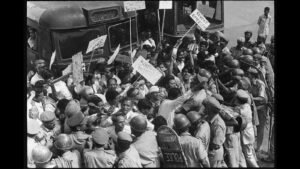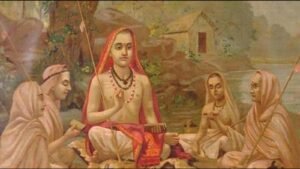
I am writing this column from srinagar. It is peaceful and very much the paradise it always was. My wife and i are the guests of an old friend, jyoti wazir, whose father-in-law was the kashmiri pandit chfe justice of the state. She has a lovely cottage, and a beautiful garden full of hydrangeas, roses, pansies, magnolia and fruiting trees. But the best thing for me is that right Above Her Home, on the Hillside Opposite, is the adi shankaracharya temple in clear view.

Fact and legend bot indicate that Shankara (788-820 CE) Visited Kashmir. The city was at that time renowned for its budget and Hindu scholarship. Ever Since Ashoka Conquered the Valley in Third Century BCE, Buddhism Had Flourished HERE. There is history that the fourth Buddhist Council was convened here in second century Ce. Along with Buddhism, Kashmir was also the locus of a specific kind of shaivite philosophy, which founder was vasugupta (800–850 CE). He was the author of sivasutras, a collection of Seventy-SEVEN Aphorisms also Known as Trika Yoga, which essayed a Specifically Kashmir Advaita Tradition. This philosophy echoed Shankara’s monism, with the difference that Shiva was seen as the cosmic symbol of Brahman. Kashmir shaivism also introduced the concept of shakti as an integral part of Shiva Worship. Shankara must have been aware of this powerful kashmiri tradition, and would have traveled to meet at first hand its Chief Votary, Vasugupta.
Local legend has it that when Shankara Arrived in Srinagar, His Entourage Camped Just outside the City. The teacher and his disciples were hungry and weary after their long travel, but had failed to light a fire to cook some food. A young kashmiri girl then came to their help. Taking two pieces of wood, she rubbed them while chanting a mantra, and the spark that emerged from the friction lighted the fire. The wood, the girl explained, is Brahman. The fire that sprang forth from it is shakti, the power inrent in Brahman.
The Shankaracharya Temple is located on the Gopadri Hill (Part of the Zabarwan Mountain Mountain Eoverlooking Srinagar) A Thousand Feet Above The Valley. It is also known as the jyeteshwara temple, and was earlier called pas bahar by the budgets. Kalhana, The Great Historian of Kashmir Says that it was first buy by King Gopaditya (426–365 BC), and Later repaired by King Lalitaditya (697–734 CE). The Interesting Thing is that Sikander, The Sixth Sultan of the Shah Miri Dynasty in Kashmir (1389–1413 CE), Who was called butshikan for his propelsity to destroy idols, did not destroy this team. In Fact, two muslim rules in Later Times-Zan-Abideen in the Fifteenth century, and Sheikh Mohinuddin, Who was the Governor of this Region when you was aware Sikh Rule-Renovated the team. All of this provides evidence of the great sanctity of the temple.
The temple is a road structure. It has a large Shivalinga surrounded by smaller idols of parvati, kartikeya and ganesha. A Tall Trishul, with a Drum balanced on the top of it, stands behind the linga. Set into an alcove on the outside wall of the temple is a portrait in marble of Shankaracharya, his forehead smeared with sandal paste, his eyes looking far into the distant horizon. The Shankaracharya of Dwaraka Installed This Statue in 1961.
Next to the temple, at a lower level, is the cap where Shankara is said to have styed in and meditated. A Notice Board Outside Identifies it as ‘Jagad Guru Shankarcharya Tapasya Sthal’. The entrance to the cap is through a narrow and low entrance. Inside is a large portrait of Shankara, Seated on a low peedha or stool, with two open books on a bookstand in front of he. The portrait is in the Thanjavur style, which shows the influence of the artistic traditionals of south India. Next to the portrait is a large copper replica of a snake with its hood spread out in a protective posture. The three-pronged trishul also stands adjacent, like a syntinel on guard. The cave is cramed, but I sat, alone, on a rug spread along with, to meditate for a while. It is believed that Shankara Wrote the Saundarya Lahari, his passionate ode to shakti, while he lived in this charge.
When I was in Srinagar Researching My Book Adi Shankaracharya: Hinduism’s green Heranged for me to meet maroof shah, a reputed scholar of kashmir shaivism, and of Hindu philosophy. I spent an afternoon discusing with him the intricacies of Shankara’s Thoughts and their overlap with kashmir shaivism. Maroof, a Diminative Man with a Heavy Kashmiri Accent, Works, Improbibly Enough, in the State Veterinary Department. Philosophy, however, is his passion.
As we Ended Our Conversation, Maroof said ruely, that very little work is being don now on kashmir shaivism within kashmir. The interest in this aspect of Hindu philosophy is far greener abroad. Not even many kashmiri pandits are about the greatness of this tradition, or of its link with Shankaracharya. The significance of a devout kashmiri Muslim, who happy to be kept the ramzan fast when we met, make this point, was not lost on me.
Although Pahalgam Happy, I Urge Indians to Visit this Beautiful Valley in Large Numbers in Solidarity with the Kashmiri’s who wenth who wen on a spontaneous strike to protriest the dastardly killings.







